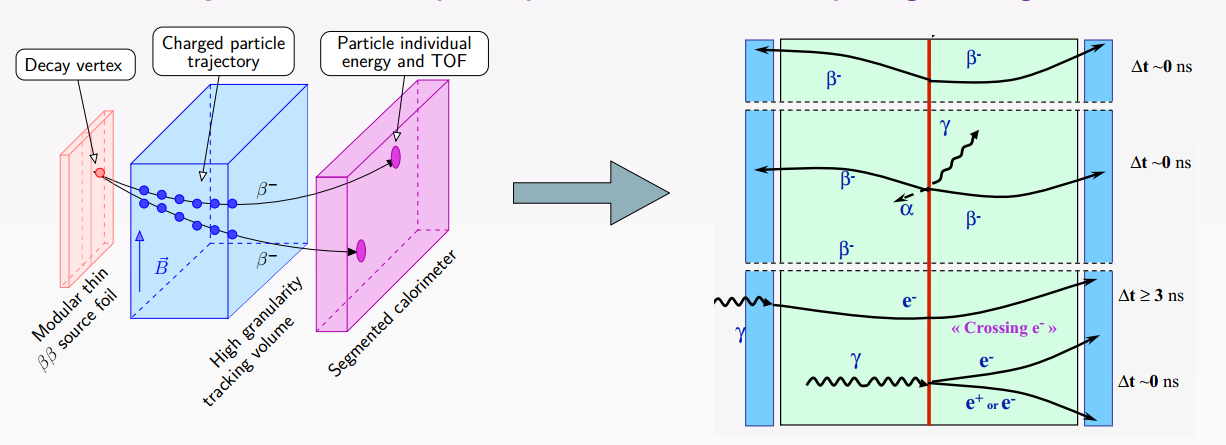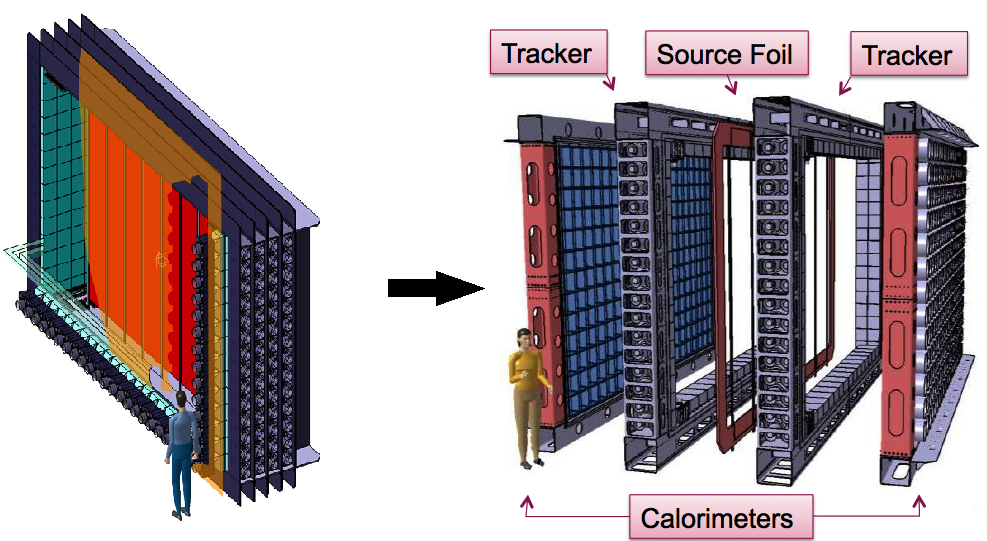SuperNEMO
SuperNEMO is a modern neutrinoless double beta decay (0νββ) experiment, built upon the success of NEMO-3. Like its predecessor, it uses a tracker-calorimeter design, with a thin foil enriched in ββ isotope sandwiched between the trackers. The wire-chamber trackers allow us to measure particles' trajectories, while the segmented calorimeter provides energy and timing information. The full topological event reconstruction uniquely available in SuperNEMO enables an extremely high degree of background rejection, flexibility in the choice of isotope, and the ability to fully characterise a neutrinoless double-beta decay signal if found. The conceptual design of this approach is shown below.

The full SuperNEMO design comprises 20 identical detector modules each containing 5-7 kg of isotope. The current baseline isotope is 82Se; however, virtually any other ββ isotope can be used. Isotopes with high transition energies (Qββ), such as 150Nd and 48Ca, are particularly interesting. The collaboration are investigating the feasibility of their enrichment. SuperNEMO aims to reach a sensitivity to the 0νββ decay half-life of > 1026 years, corresponding to an effective Majorana neutrino mass of 50-100 meV.
The modular design allows a staged approach to detector construction with the first modules taking data while others are being built. It also offers the possibility to build modules in different underground locations. Another important advantage of the modular design is a straightforward extrapolation of a single module performance and sensitivity to the full SuperNEMO detector.
To this end, the collaboration has built the first module, the SuperNEMO Demonstrator, which is currently being installed in the LSM underground laboratory in place of the dismantled NEMO-3 detector. The demonstraor module, shown in the figure below, has the dimensions of 6m x 4m x 2m and consists of three main parts: i) the source foil containing the decay isotope, 82Se, sandwiched on each side by ii) gaseous tracking chambers (operated in Geiger mode) then followed by iii) calorimeter walls. A magnetic field of ~25G is applied to distinguish electrons from positrons.

UCL has been particularly involved in building the tracker modules, and is currently working on installation and commissioning of the detector at the lab, as well as working on the tracker gas system and ensuring the radiopurity necessary for the low background experiment. We have also been preparing software to analyse physics data and simulation, and play key roles in the experiment's analysis board.
The Demonstrator integration at LSM will be completed in spring 2018 followed by the installation of passive shielding. The physics run is envisaged to start in 2018.
For the list of UCL-HEP activities in SuperNEMO and PhD opportunities click here.